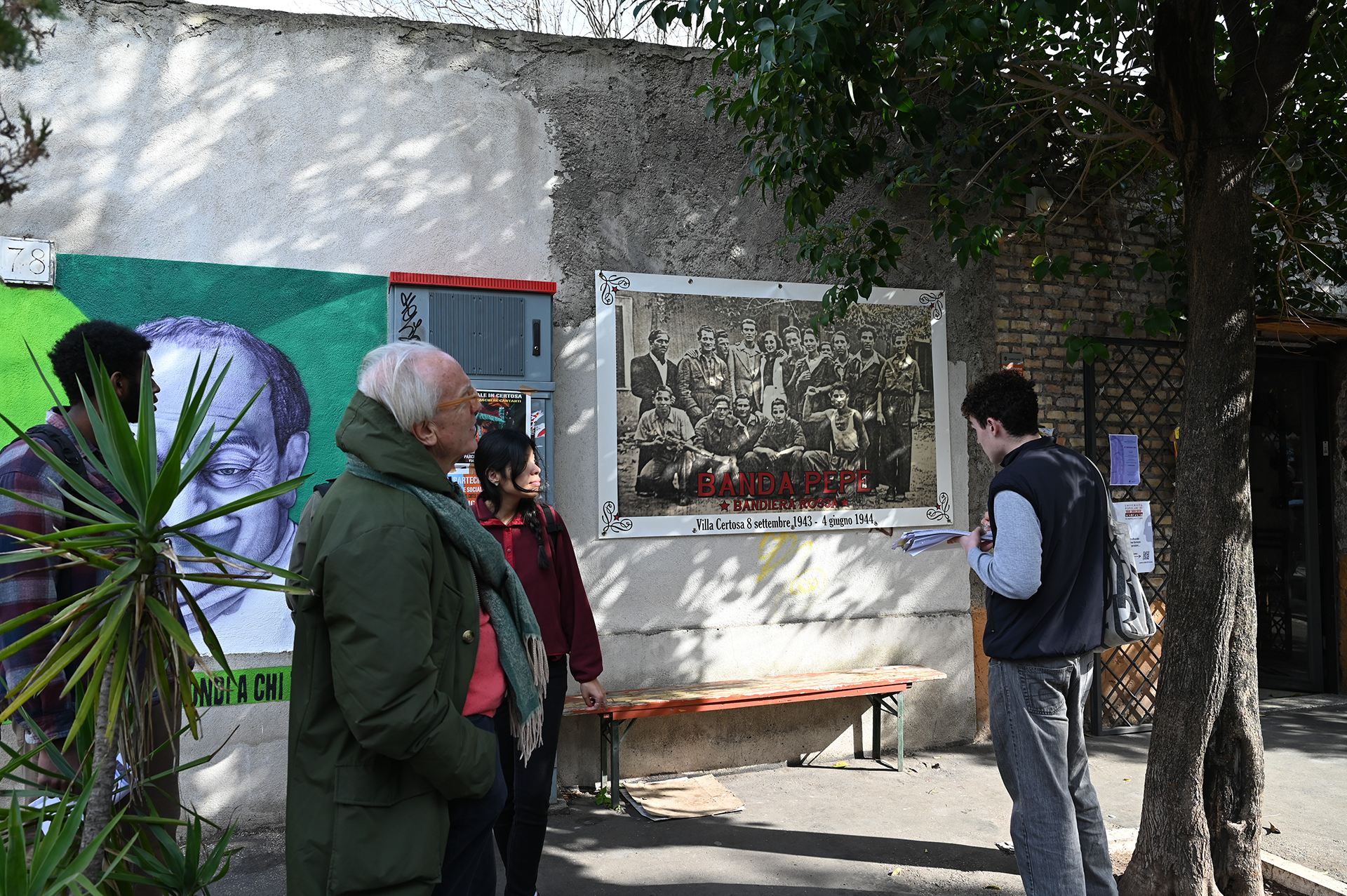
Students embark on a walking tour of La Certosa. image / Suzanne Lanyi Charles
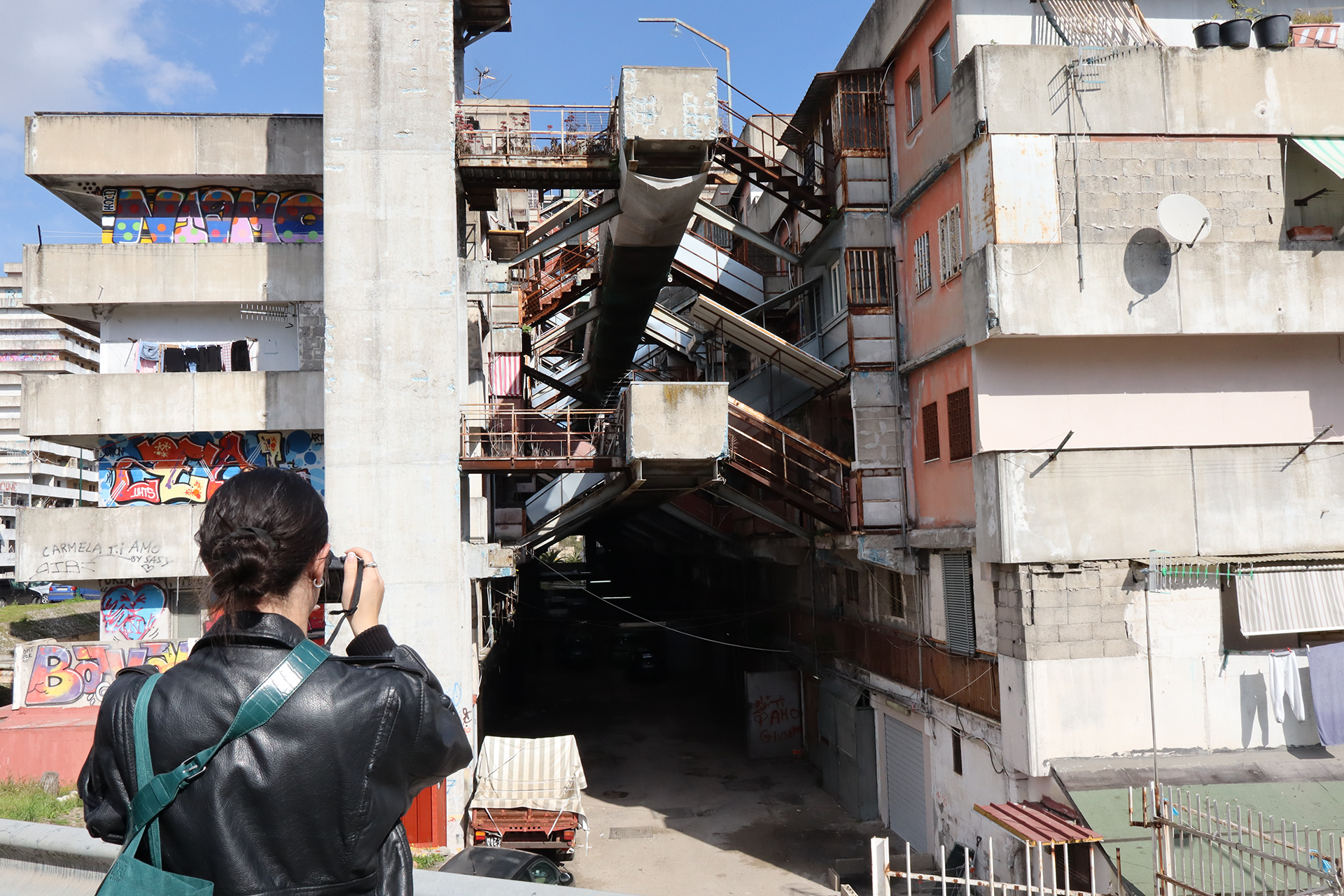
Le Vele di Scampia (Sails of Scampia), a large urban housing project built between 1962 and 1975. Lillian Liu (B.S. URS '25) / AAP
Cities worldwide face challenges related to housing availability and affordability. Wages are failing to keep pace with rising rents, and the addition of new, accessibly priced housing inventory is sluggish. The issue is prevalent, and approaches to alleviating the pressure can vary widely.
AAP students studying at Cornell in Rome this spring explored the timely topic of housing access with course work across several classes. Associate Professor and Director of Graduate Studies for Real Estate Suzanne Lanyi Charles co-taught the Rome Workshop with City and Regional Planning (CRP) Lecturer Greg Smith this semester, which examined housing issues in three neighborhoods. Charles also led a CRP Special Topics in Planning course on the impacts of housing financialization. Further, while the semester's European Cities class didn't focus specifically on the topic, it sits at the crossroads of many urban studies discussions, so CRP Visiting Critics Viviana Andriola and Serena Muccitelli added visits to two housing landmarks to their Rome itineraries. Class field trips to sites at the city's periphery (Garbatella, Corviale, La Certosa, Don Bosco, and Vigne Nuove) and outside Napoli (Scampia), Bologna, Parma, and Milan presented opportunities for observations beyond the classroom.
"Everybody needs to live somewhere," notes Charles, whose teaching and research largely focus on how housing is created and financed. "Each of the three neighborhoods that the students studied in the workshop presents questions that necessarily involve housing. Interestingly, all of these examples raise pertinent parallel questions for housing in the US."

Students embark on a walking tour of La Certosa. image / Suzanne Lanyi Charles
How Public Housing Sits in the City
During their course on European cities this semester, Between Local Activism and Urban Policymaking: Challenges and Perspectives, Andriola, Muccitelli, and their students embarked on two site visits. Corviale, built in the 1970s and one of Italy's largest postwar public housing projects, was meant to include not only residential units but also commercial, social, recreational, educational, and professional spaces for the community. However, due to financial issues during construction, in the end it provided only residential as well as informal housing spaces built by inhabitants. After decades of poor maintenance and public stigma, in more recent years the neighborhood has received public funding and some renovation, with additional projects planned. Garbatella, originally built as a public housing neighborhood at the beginning of the 20th century, has since been privatized, which the instructors point out "attracted new inhabitants thanks to its strong community identity and its semi-central location, posing new questions on its social and physical heritage and triggering a wide gentrification process."
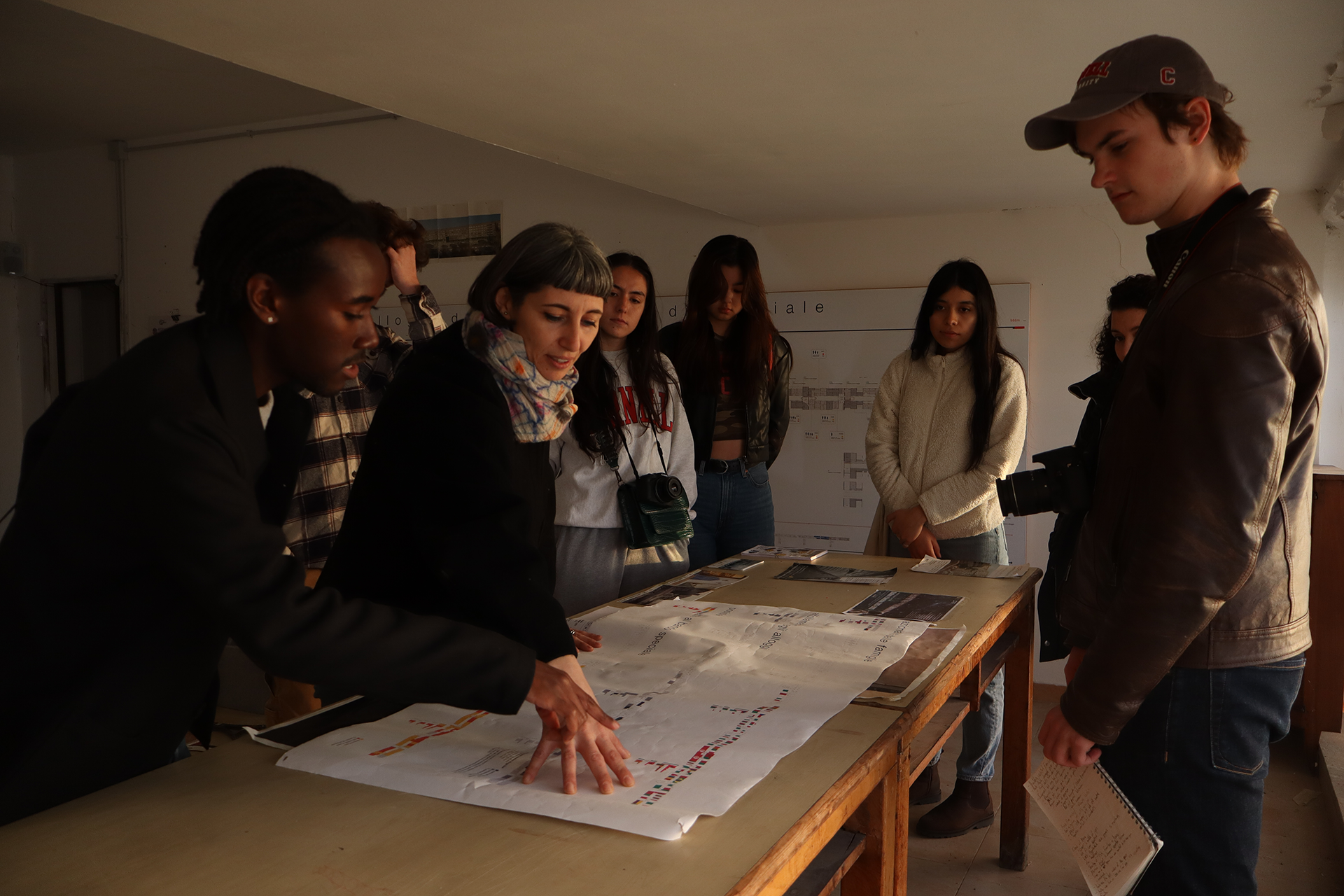
Discussion during a visit to Corviale. Lillian Liu (B.S. URS '25) / AAP
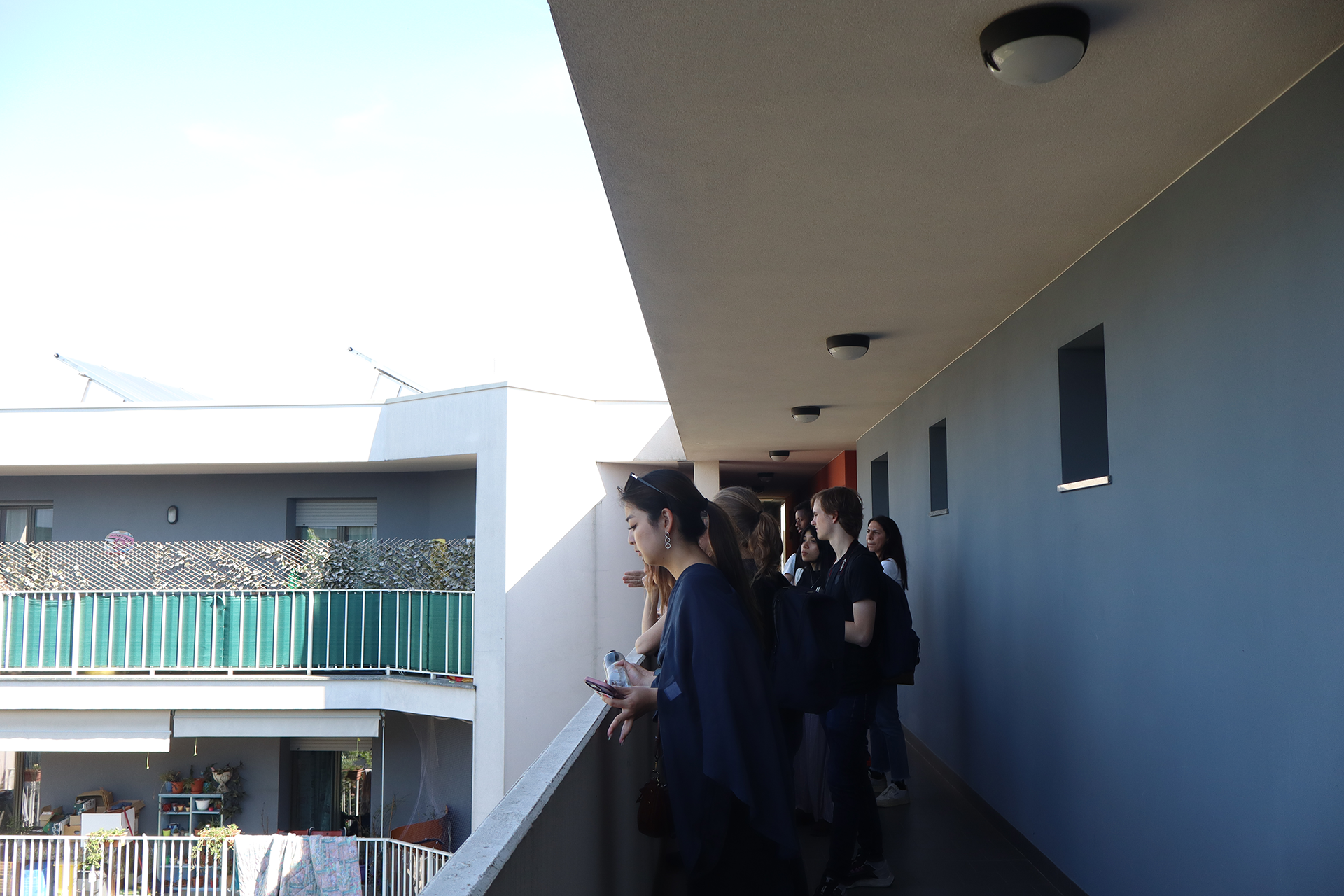
Touring a social housing development in Parma. Lillian Liu (B.S. URS '25) / AAP
Andriola and Muccitelli shared that both neighborhoods address topics included in their course, including urban regeneration, policy integration, place-based approaches to urban policies, welfare spaces, gentrification, local activism, migrants, and social divide. "By mixing a theoretical framework on European trends with local responses experienced during site visits, the course provided a working space for questioning the wide array of urban challenges affecting contemporary cities," they say. "Visiting these unique places gave students the opportunity to clearly perceive what a public housing complex is and the challenges they are facing in contemporary times. Thanks to this broad knowledge framework, the students were able to better comprehend some specific topics they encountered in other classes."
Charles also took a broad view in her course on the financialization of housing — for example, how the global interconnection of banks, financial intermediaries, and institutional investors affects access to housing — through journal articles and lectures presented by scholars from Italy, France, and the Netherlands. As a result, she says, students took away a greater appreciation for how housing is built and financed, and the impact that has on access to affordable, safe, and secure shelter.
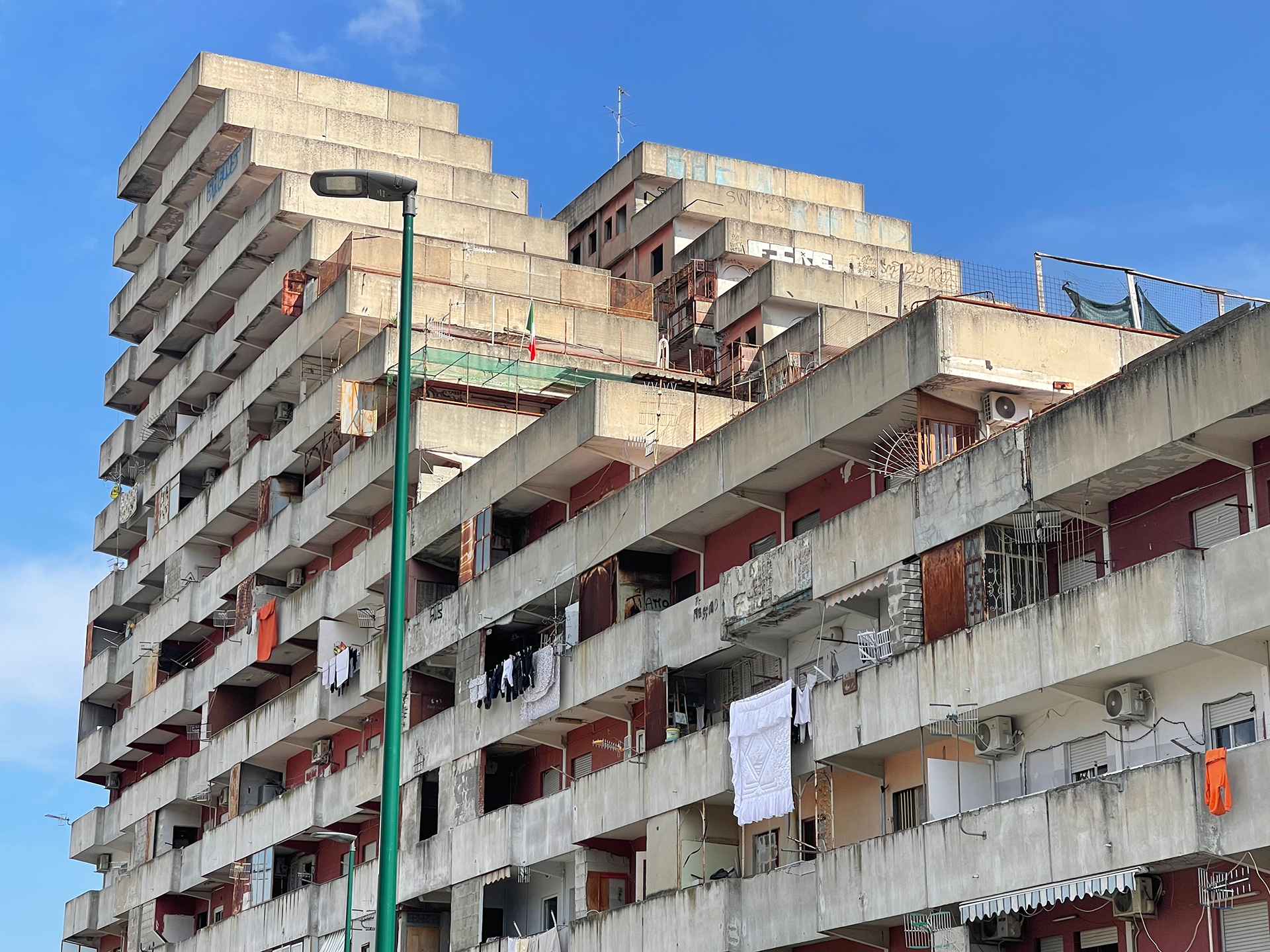
Another view of LeVele di Scampia (Sails of Scampia) on the northern periphery of Naples, a housing complex by Franz di Salvo. image / Suzanne Lanyi Charles
Beyond the Bubble
For the Rome Workshop, Charles and Smith selected three neighborhoods, which the students analyzed in teams: La Certosa, Don Bosco, and Vigne Nuove. Located on the city's periphery, well outside the central tourist bubble, the sites allowed the students to see a Rome that isn't in the guidebook.
"Those three neighborhoods each have housing that's owned and operated by the government, similar to how we would think of public housing in the US, but also social housing that's made more affordable in other ways," Charles explains. Vigne Nuove, for example, is a neighborhood that has a large public housing building complex as well as social housing, including cooperatively built options reaching a wider range of households — models students got to see first-hand during their field trip to Bologna and Parma. These developments may take advantage of government subsidies or be placed on municipal land and offer tenants below-market rents based on income or the opportunity to eventually purchase their home, depending on the terms. La Certosa comprises affordably self-built housing and is an area that has attracted recently arrived migrants. In the Don Bosco neighborhood, recent EU incentives for environmental updates to buildings made some of them more energy efficient, but that has also led to concerns about potential gentrification.
In many of these communities, certain residents have also established squats in available buildings when other options are either not available or remain financially out of reach. Jessie Fujii (B.S. URS '25) observed it to be a powerful tool for not only addressing housing needs but also influence socio-political dynamics. She shares that "in Vigne Nuove, my team and I had the opportunity to interview activists of Centro Donna L.I.S.A., an anti-violence feminist organization that initially squatted their headquarters in the neighborhood before being legitimized as an entity providing a service to the neighborhood and surrounding communities. In addition, a privately owned residential building is currently being squatted by families needing homes, presenting a more need-based example of squatting. Rome is also characterized by the informal construction of housing. Such practices occur through both formalized and organic collective action, yet both have been shown to successfully provide opportunities to tackle Italy's housing crisis."
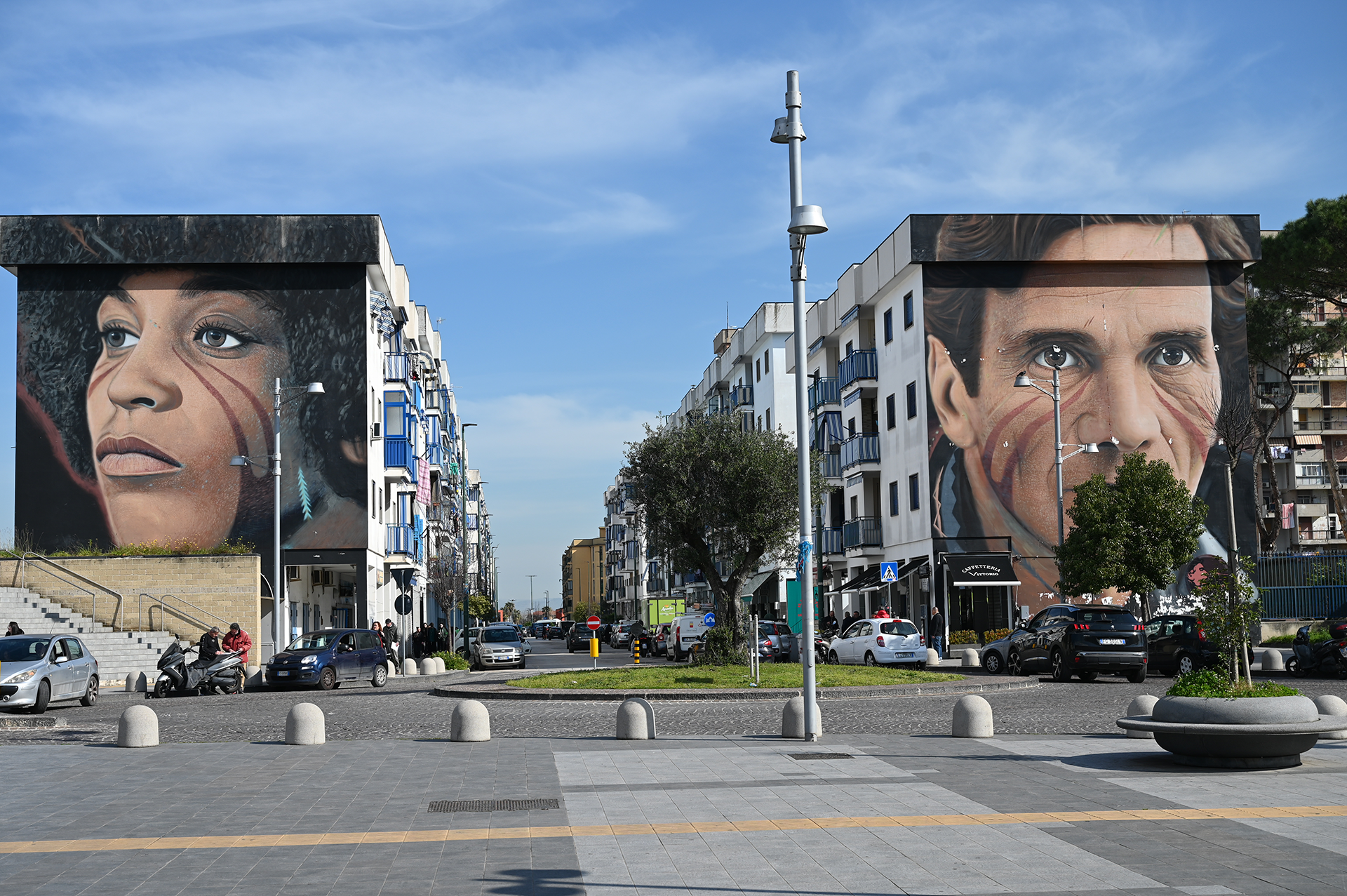
Murals in the Scampia district of Naples by the street artist Jorit Agoch depicting Angela Davis and Pier Paolo Pasolini. image / Suzanne Lanyi Charles
The Takeaway
While Italian cities have private development, gentrification pressures, and housing challenges like many other places, Charles is excited by the alternative housing examples in and around Rome. "I think there are many positives that we can take from how housing is produced here that we can take home," she concludes. "We are very much reliant on the private sector to produce affordable housing in the US. What if we focused on creating housing where one is able to live their life in a safe, secure, and affordable place that it doesn't take over 50% of their income to pay for? What if we had a way of producing affordable housing for a range of household incomes so that we could take that burden off the table?"
Laura Romero (B.S. URS '25) also expects the examples they saw and the experiences of the people she met with her research to stick with her as she moves forward in her work. "One of the biggest takeaways from this experience in Rome is that people care about their neighborhood," Romero shares. "They were eager to understand the challenges and the potential solutions. I am interested in continuing to find and share this passion with people from all of the different neighborhoods where I consider myself a member. Through newfound engagement and the spread of knowledge, my hope is that communities can become better equipped for decision-making and the socio-political autonomy of their neighborhood."